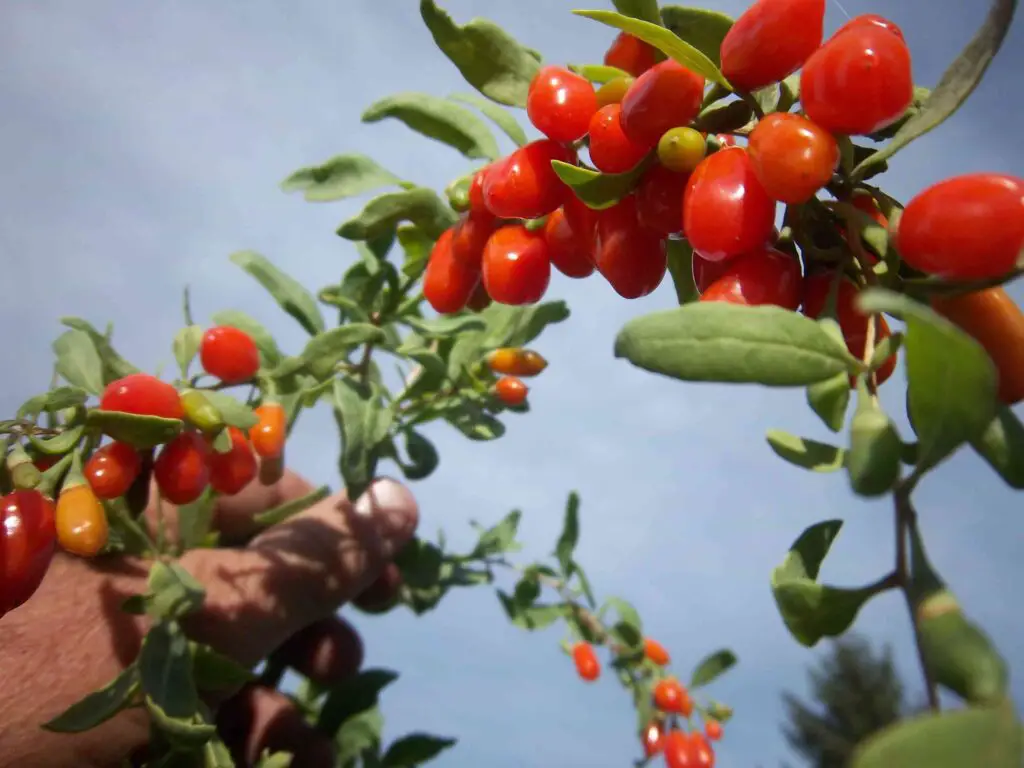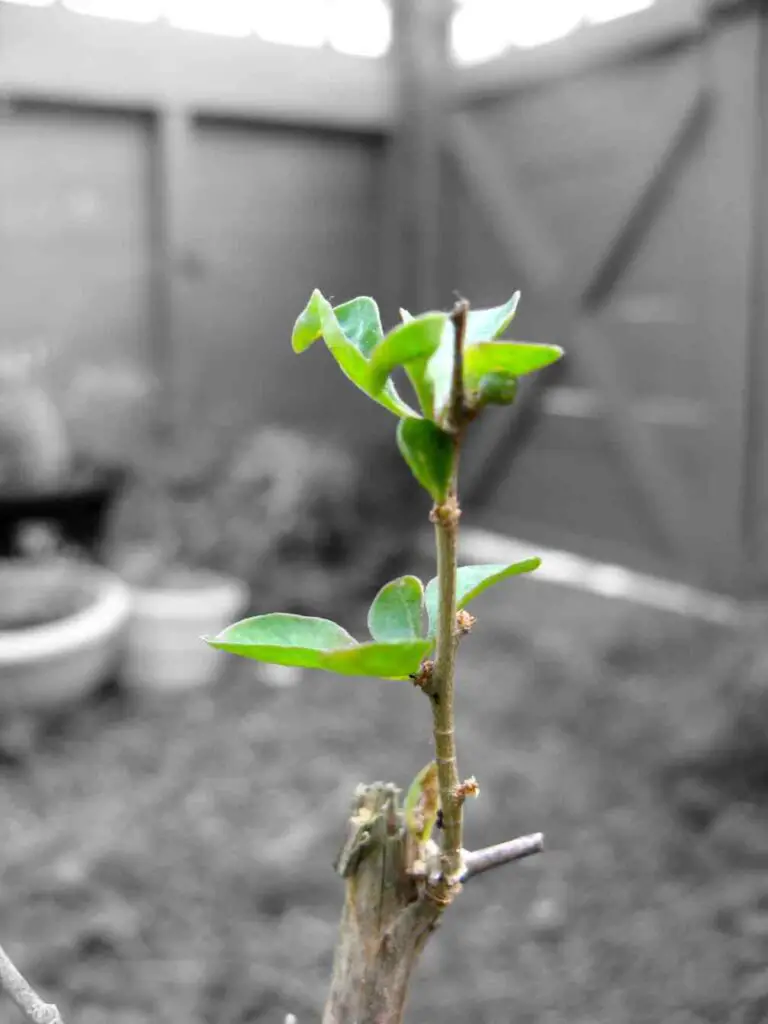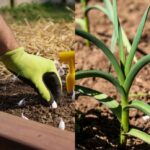Nature has blessed humans with a lot of presents. These blessings not only make the living life beautiful but also provide the essential nutrients required by the human body to survive. If you want such a plant, then you need to learn growing Goji Berry Plants in pots.
The Goji berry plant is known for its medicinal use. It is an ancient plant used in Chinese medicine for a long period of time. It is also known as a superfood, because of containing a number of vitamins, minerals, and antioxidants. This plant is a true blessing of mother nature and a great addition to the garden.

Types of Goji Berry
There are two types of goji berry plants. One is Lycium Chinese which has small-sized berries. The other one is known as Lycium Barbarum. This type of goji beery has sweeter berries and has great taste. It is also known as Wolf Berry.
Most of the time, the after-mentioned type of goji berry the Lycium Barbarum is planted.
Goji Berry Plants
Goji berry plants are deciduous. This means leaves from these plants fall every year, usually after the first frost of the winter. Originally used in China for medicinal use, goji berries are known as a superfood and one of the mightiest foods, a powerhouse of many essential ingredients required by the human body.
Goji berry plants do well when care is taken in the frost season. The fruit is a special gift of this plant. These little fruits are fully packed with a number of vitamins, minerals, and antioxidants. The little red fruit of the goji berry is tasty and tart.
These berries are a little bit difficult to find in stores. Also, after 2005 these berries got important among people for their nutritious value in the United States.
Why Plant Goji Berry Plants
Importance in Food and Medicine
Goji berries have established importance in the field of medical and food sciences. These berries are cures for so many diseases and also work as proactive measures against so many diseases which can badly affect humans.
These berries contain special nutrients which are good for the immune system of the human body, which have a role in increasing life expectancy, increasing brain activity, making the digestion system work at its best, and improving eye health along with curtaining some types of cancers as well.
Characteristics of Goji Berry Plants
These plants are highly adaptive and thrive well. They are regarded as easy plants with respect to the efforts required for a particular plant to grow. As in the United States hardiness zones, it can grow in zones like 3 to 10.
Moreover, these plants are not specifically prone to any such pests or diseases. Because of such minimal efforts, such a great reward makes this plant the most preferred plant for the garden. Most of the time people try to get these plants at any cost. But you don’t have to worry these plants are now available easily.
How to Plant Goji Berry Plants in Pots
Goji berry plants are easy to plant and take care of. You just need to follow some basic steps. Following these steps with care can result in good and healthy plants which will have lasting value for the efforts involved.
Also, read
How to Plant Huckleberry from Seeds
Getting the Seeds/ Plants of Goji Berry
Goji berry can be grown from seeds, saplings, and from cuttings as well. It’s up to you which method you want to follow. If you want to plant goji berry from saplings, you can get the saplings from local gardening stores. Handle them with care.
If you have decided to grow goji berries from seeds, you can get the seed from the store or you can extract the seed from dried goji berries. After getting the seed, prepare the substrate and sow the seeds in the moistened substrate. Keep it in a warm place (20 C).
It takes 3 to 15 days for goji berry seeds to germinate. After seedlings have emerged, transplant them into the container after 2 weeks. Handle the roots with care.
Selection of Container for Planting Goji Berries Plants
Careful selection of containers is very important. It has a wise impact on the future growth of the plant. Choose the container which is deep enough. At least the container should be deep about 5 gallons. More than that is even good. The width of the container doesn’t matter a lot.
The depth of the container is important because the plant will stop growing when the roots will touch the bottom of the container. You might need to change the container after a few years because plants become root-bound.
Also, make sure the container is well-drained. This will help in tackling the overwatering, and any disease arising from such action.
Selection of Soil for Planting Goji Berries Plants
While filling the container select the soil with care. These plants are not such demanding in this regard, but good soil will provide good nutrients to the plant. The pH level between 6 to 6.5 is acceptable. You can mix the compost or organically composed matter before filling it into the container.
A compost or organic mixture is suggested to mix because these plants are nutrient-rich. The nutritious soil will help these plants to grow steadily. Moreover, well-drained soil is best. Otherwise, roots will rot in the soil.
Place the container in a sunny place. These plants need a good amount of sunlight to grow smoothly.
Transplanting the Goji Berry Plants into Pots
Moisten the soil before planting the plants. Make a hole in the soil deep enough to cover the root ball of the saplings. Push the soil back in the hole to make a good room for the roots. Roots should be free in the hole.
After putting the plant in the hole, fill the soil gently. Cover the surroundings of the plant with soil and gently press it to make it firm. Water the plant well after the plantation. Keep it well moist until new sprouting has aroused. You can add mulch to the plant to keep the moisture intact.
Taking Care of Goji Berry Plants

Goji berry plants are categorized as easy in terms of taking care of them. It is high time to take good care of these plants and receive a great gift from nature with limited efforts.
Watering Schedule
This is the most difficult or sometimes most essential part of plant care. The goji berry plants are drought tolerant when established. But these plants need water in the earlier phase of life. Water these plants deeply and check the moisture with your fingers.
You can start watering the plant 1 inch per week once it starts establishing. Do not go for over-watering. it can cause roots to rot. You can eventually lose the precious plant on this little carelessness.
Fertilizer Requirement
Goji berry plants don’t need enough fertilizers. If the organic composed matter or compost was added to the soil at the time of plantation it will do good. However, the supply of balanced fertilizers in the spring will be good for the smooth growth of plants.
Sunlight Requirement for Goji Berry Plants
Goji berry plants need a good amount of light. Place the container in the spot where there is exposure to sunlight for like 8 hours a day. If this is not possible you have to go for artificial light, because it is necessary for the steady growth of the plant.
Pests, Problems, and Diseases
Goji berry plants are not prone to any such pest or disease, however, if there is any local attack of any pest or disease you can consult with a nearby horticulturist.
As there are fruits on the plant, it can attract the birds, which love to eat goji berries. So, take good care of these birds to save the fruit.
Pruning of Goji Berry Plants
Pruning is very important when growing goji berry plants in pots. Don’t prune the plants in the first year. Prune the plants lightly. Pruning helps in branching, good air circulation, and improves light penetration in the plant. It also develops resistance against pests and diseases.
Harvesting of Goji Berry Fruits
Most of the time goji berries do not bear fruit in the first year. In rare cases, it can be the opposite. When the fruit is having a red color, it is considered ripened, but the story is not complete here. Fruit still can be red but not ripened. Only tasting is a good option to decide about it.
It has a tart taste but can be eaten easily. You can decide by their taste whether the goji berries are ready to be harvested or not.
In a nutshell, the goji berries are a majestic and a super addition to the garden. There is another blessing that this plant can be grown indoors as well. Plantation of such plants which have such a wonderful reward against such a number of efforts is such a blessing of nature that cannot be taken lightly.
You May Also Like To Plant
How To Grow Quinault Strawberries In Containers | GROWING STRAWBERRIES IN CONTAINERS
HOW TO GROW BLACK RASPBERRIES FROM CUTTINGS
- 40 Fall Decor Ideas for the Bathroom

- 15 Best Vegetables to Grow in Winter

- How to Grow Garlic in Fall?

- How to Protect Plants in Winter?

- 22 Plants That Survive in the Winter?

- 20 Plants That Flowers in Winter

References
https://plantinstructions.com/fruit/how-to-grow-goji-berries/

